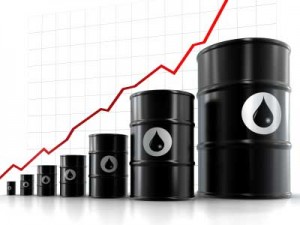Oil Rises For Fifth Day On Stimulus Outlook, Middle East Unrest
 Oil climbed to the highest level in a week in New York on speculation that U.S. and European policy makers will act to boost growth and concern that unrest in the Middle East may spread and disrupt supplies.
Oil climbed to the highest level in a week in New York on speculation that U.S. and European policy makers will act to boost growth and concern that unrest in the Middle East may spread and disrupt supplies.
Futures rose for a fifth day, heading for the first monthly gain in three. The European Central Bank and the U.S. Federal Reserve are scheduled to meet separately this week to discuss the economy. The Syrian government’s use of “indiscriminate violence” will hasten its collapse, U.S Defense Secretary Leon Panetta said. The Middle East produces about a third of the world’s crude. Enbridge Energy Partners LP (EEP) said it’s unsure how soon it can resume a pipeline that supplies oil to Chicago-area refineries after a leak.
“The market is riding high on the talk of stimulus,” said Jonathan Barratt, the chief executive officer of Barratt’s Bulletin, a commodity-markets newsletter in Sydney. “We also have some geopolitical concerns.”
Oil for September delivery gained as much as 82 cents, or 0.9 percent, to $90.95 a barrel in electronic trading on the New York Mercantile Exchange. It was at $90.36 at 2:05 p.m. Singapore time. The contract climbed 0.8 percent to $90.13 on July 27 for the highest close since July 20. Prices are up 6.4 percent this month.
Brent crude for September settlement was at $106.50 a barrel, up 3 cents, on the London-based ICE Futures Europe exchange. The European benchmark’s premium to West Texas Intermediate was at $16.14. It closed at $16.34 on July 27, the widest gap in more than two months.
Policy Meetings
Oil in New York may decline as a bearish “hanging man” candlestick on the weekly chart signals the price advance has stalled, according to data compiled by Bloomberg. Futures began a descent to the lowest level in almost nine months after a similar technical formation in the last week of April.
The ECB’s Governing Council is scheduled to meet Aug. 2 in Frankfurt and gauge the effect of its July decision to cut the benchmark interest rate to a record low of 0.75 percent. The Fed’s Federal Open Market Committee will consider the need for more stimulus at a two-day meeting that concludes Aug. 1.
ECB President Mario Draghi meets with U.S. Treasury Secretary Timothy Geithner in Frankfurt today. Draghi is also trying to persuade ECB policy makers to agree on a multi-pronged approach to reduce bond yields in countries such as Spain and Italy, two central bank officials said July 27, declining to be identified because the talks are private.
Enbridge Pipeline
In Syria, government forces stepped up their assault on rebels in Aleppo, the nation’s commercial hub, and Damascus, killing at least 120 people yesterday, according to the Local Coordination Committees, an activist group. Panetta spoke to reporters yesterday as he started a five-day trip to Tunisia, Egypt, Israel and Jordan to discuss security in the region.
The Enbridge leak of about 1,200 barrels of oil on July 27 was on Line 14 near Grand Marsh,Wisconsin, about 60 miles (96 kilometers) north of the state capital of Madison. The company said in a statement that the pipeline has a capacity of 317,600 barrels a day that mostly supplies light crude.
Hedge funds increased their bets on rising crude prices last week, according to data from the U.S. Commodity Futures Trading Commission. Net-long positions in oil futures, held by money managers advanced by 7,471, or 5.6 percent, to 140,636 futures and options combined in the seven days ended July 24.
The average price for regular gasoline at U.S. filling stations rose 9.55 cents in the past two weeks to $3.5058 a gallon, according to Lundberg Survey Inc.
The survey covers the two weeks ended July 27 and is based on information received from about 2,500 stations by the Camarillo, California-based company. The average is down 19.55 cents from a year earlier. Gasoline is 46.13 cents below the year-to-date high of $3.9671 on April 6.








